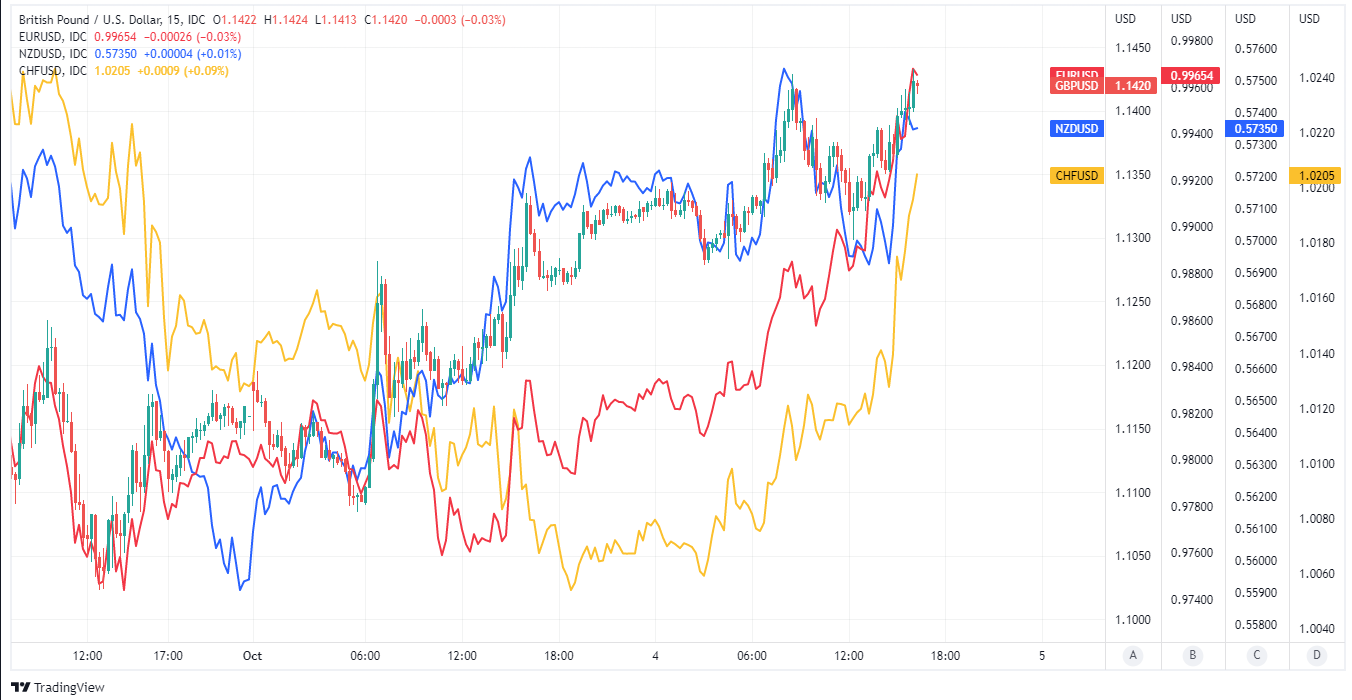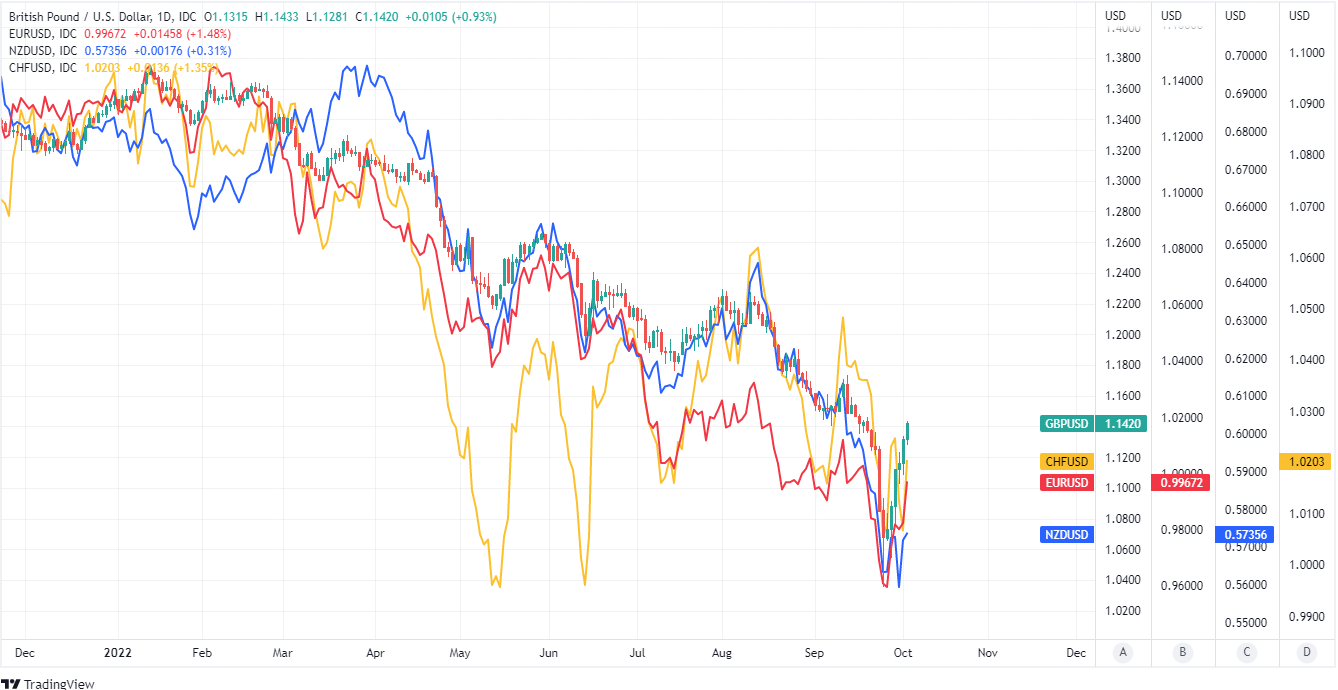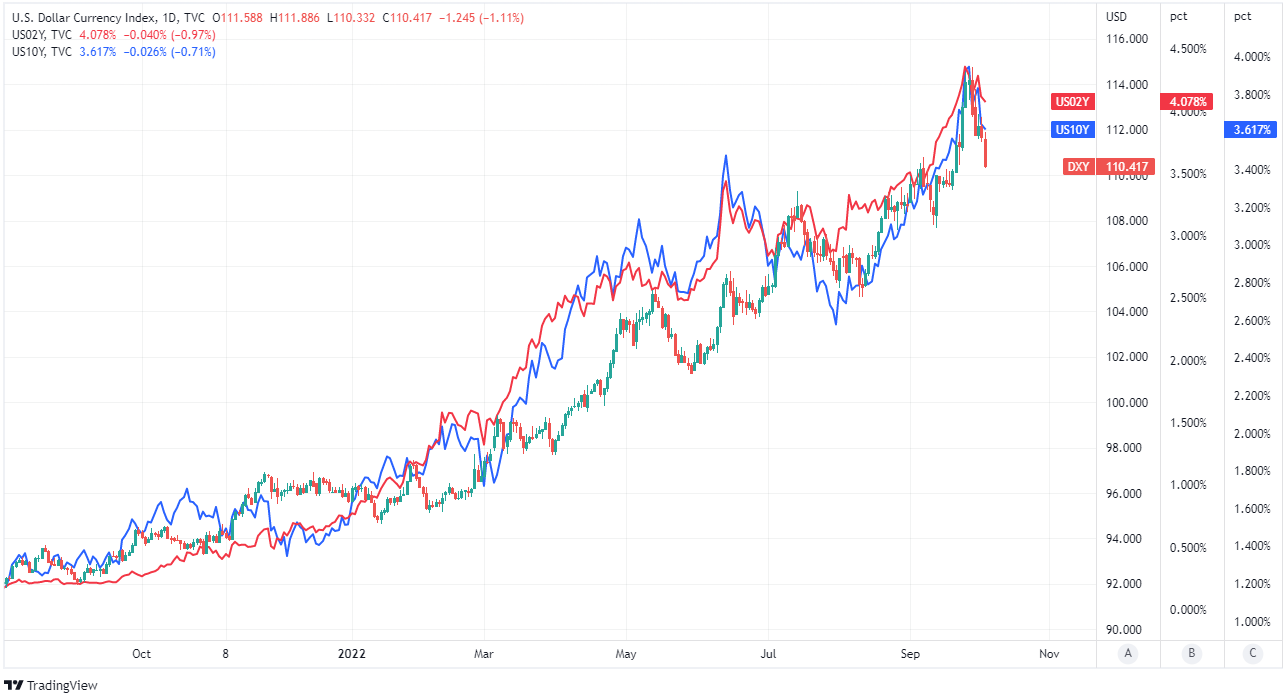Pound Extends Rally Against Retreating Dollar after U.S. Job Vacancies Slide
- Written by: James Skinner
"If it continues over the next few months, and core inflation falls as much as we expect, the Fed will not be hiking by 125bp by the year end. Our base case is 100bp, but 75bp or even 50bp now can’t be ruled out," - Pantheon Macroeconomics.

Image © Adobe Images
The Pound to Dollar rate climbed back above 1.14 to extend a six-day recovery as U.S. exchange rates eased across the board following the release of data suggesting the number of U.S. job vacancies fell sharply in August.
Reducing historically elevated corporate demand for labour has been a key objective of the Federal Reserve (Fed) in its attempt to return U.S. inflation to the 2% target after wage growth rates begans rising significantly in response to this as well as the energy and food price increases seen over recent years.
Hence why members of the Federal Open Market Committee may feel heartened after the Bureau of Labor Statistics (BLS) said on Tuesday that job vacancies fell from 11.17 million to 10.05 million over the course of August.
"The largest decreases in job openings were in health care and social assistance (-236,000), other services (-183,000), and retail trade (-143,000)," it said of the monthly Job Openings and Labor Turnover Survey (JOLTS).
"The number of hires was little changed at 6.3 million, and the rate was unchanged at 4.1 percent. Hires decreased in federal government," it added.
 Above: GBP/USD at 15-minute intervals alongside other Dollar exchange rates. Click image for more detailed inspection.
Above: GBP/USD at 15-minute intervals alongside other Dollar exchange rates. Click image for more detailed inspection.
GBP to USD Transfer Savings Calculator
How much are you sending from pounds to dollars?
Your potential USD savings on this GBP transfer:
$318
By using specialist providers vs high street banks
The data relates to the month before the Fed lifted its interest rate by three quarters of a percentage point for a third consecutive occasion, taking the Fed Funds rate to between 3% and 3.25% for September in a decision that was accompanied by forecasts warning of further increases ahead.
September's forecasts suggested that rates could rise as much as another 1.25% in 2022 to place the Fed Funds rate in a range between 4.25% and 4.5% before climbing again to between 4.5% and 4.75% at some time in 2023.
"In one line: The first clear sign of weakening labor demand will pressure the Fed to do less, if it persists," says Ian Shepherdson, chief economist at Pantheon Macroeconomics.
"If it continues over the next few months, and core inflation falls as much as we expect, the Fed will not be hiking by 125bp by the year end. Our base case is 100bp, but 75bp or even 50bp now can’t be ruled out," Shepherdson wrote on Tuesday following a review of the JOLTS survey.
Dollar exchange rates built further on earlier losses following the data while U.S. government bond yields began to reverse earlier increases in outcomes that offered additional relief to other currencies and bond markets across the globe.
 Above: Pound to Dollar exchange rate shown at daily intervals alongside other Dollar-facing exchange rates.
Above: Pound to Dollar exchange rate shown at daily intervals alongside other Dollar-facing exchange rates.
Tuesday's job vacancy data followed Monday's release of the Institute for Supply Management (ISM) Manufacturing PMI for September, which posted its largest fall for a number of months before coming to rest at its lowest level since May 2020 in what is a further indication of a slowing U.S. economy.
Monday's report suggested that new order and employment levels were falling in September and that prices paid rose at a slower pace, all of which also potentially portends an easing of U.S. inflation pressures further down the line.
"And here we are, with softer US ISM manufacturing data adding to signs of softness in construction, industrial production and durable goods orders," says Kit Juckes, chief FX strategist at Societe Generale.
"Is the fed going to follow the RBA and pivot to a slower pace of policy tightening, shifting the dollar smile down in the process and triggering a deeper wave of short covering for other currencies? The Brazilian real thinks so," Juckes wrote to clients earlier on Tuesday.
While some of the economic data emerging from the U.S. suggests the FOMC may be having some success in driving inflation back toward its target and financial markets have taken an optimistic view on this subject, the Fed's preferred measure of inflation told a different story just last week.
 Above: U.S. Dollar Index shown at daily intervals alongside 02-year and 10-year U.S. government bond yields.
Above: U.S. Dollar Index shown at daily intervals alongside 02-year and 10-year U.S. government bond yields.
GBP to USD Transfer Savings Calculator
How much are you sending from pounds to dollars?
Your potential USD savings on this GBP transfer:
$318
By using specialist providers vs high street banks
The Core Personal Consumption Expenditures (PCE) Price Index rose in both monthly as well as annualised terms for August when released last Friday, surprising on the upside of economist expectations and potentially indicating that the Fed has some way left to go in its battle against inflation.
This was the message of John Williams, President of the Federal Reserve Bank of New York, when addressing the 2022 U.S. Hispanic Chamber of Commerce National Conference, Phoenix, Arizona on Monday this week where he said U.S. demand for manufactured goods and labour needed to fall further.
To an extent, falling demand for manufactured goods and labour is exactly what the data released over the course of Monday and Tuesday is pointing to, although it's far from clear that a singular set of survey indicators would be enough to sway the Federal Open Market Committee of rate setters.
"Absent further supply disruptions, I expect slowing global growth, in part reflecting tighter monetary policy here and abroad, will continue to reduce demand for these products. This should put downward pressure on commodity prices and help ease inflationary pressures, especially for goods and services that are heavily reliant on commodity inputs," Williams said.
"Unfortunately, that's it for the good news on inflation. The fact is, lower commodity prices and receding supply-chain issues will not be enough by themselves to bring inflation back to our 2 percent objective. The demand for durable goods remains very high—beyond what can be produced and brought to market, even with improved supply chains. And the demand for labor and services is far outstripping available supply. This is resulting in broad-based inflation, which will take longer to bring down," he added.




